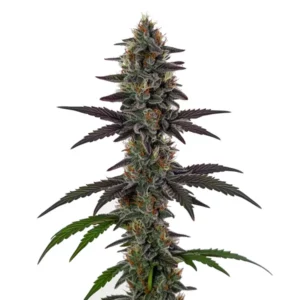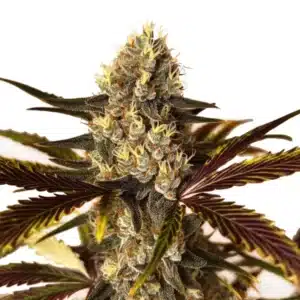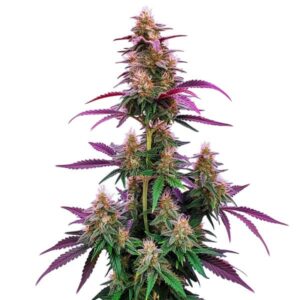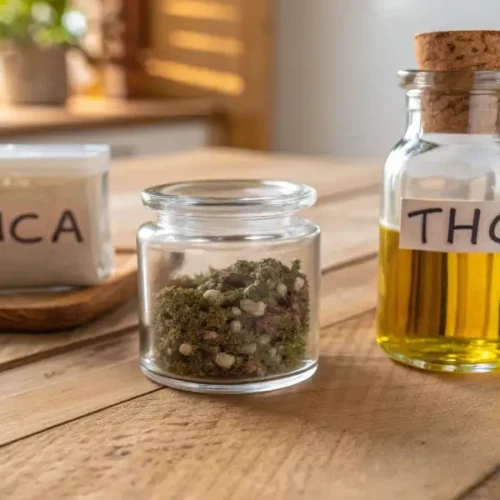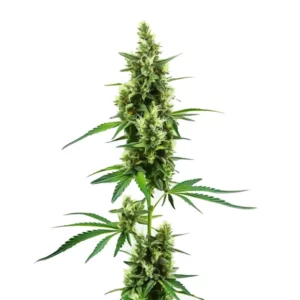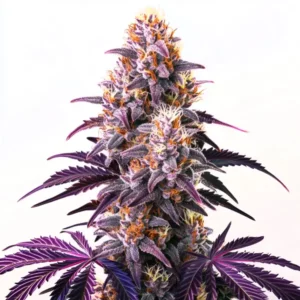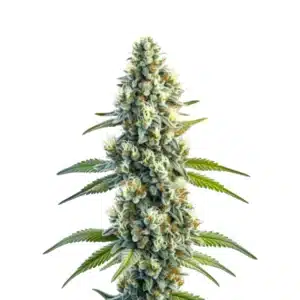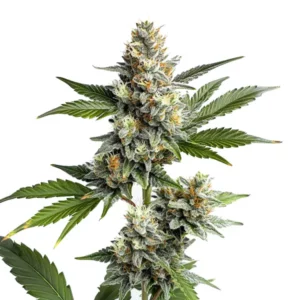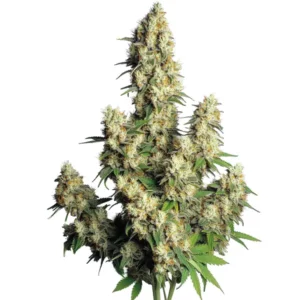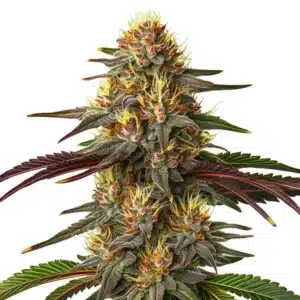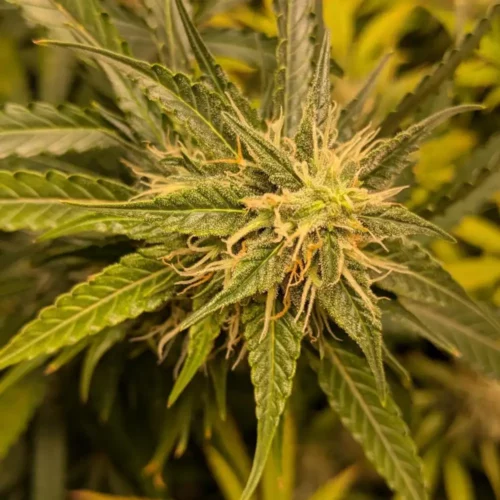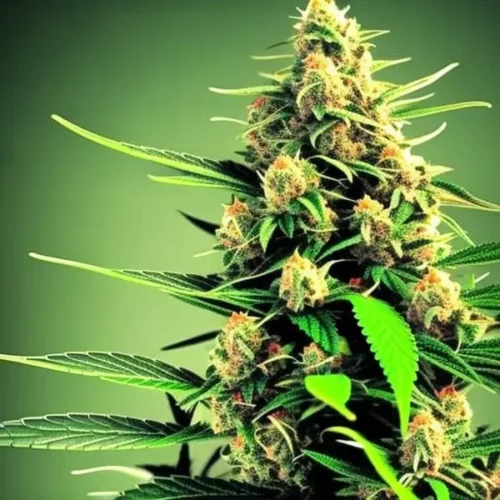Hindu Kush Regular Strain Description
Hindu Kush Regular is a legendary and iconic cannabis strain that has long been celebrated by cannabis cultivators and enthusiasts. Known for its pure Indica lineage, this strain originates from the Hindu Kush mountain range, which stretches between Pakistan and Afghanistan. Its distinct traits make it a favorite for both recreational users and those seeking natural therapeutic relief.
The Hindu Kush Regular Strain typically exhibits dense, resin-coated buds that are adorned with dark green and purple hues. The buds are compact, showcasing a frosty layer of trichomes that indicate the potency of the plant. This strain is renowned for its earthy, citrus, and sweet notes that blend beautifully into a complex and highly aromatic profile, providing an enticing and smooth smoking experience.
Recommended Strains
Hindu Kush Regular
 THC: 15% - 19%
THC: 15% - 19% Type of seed: Regular
Type of seed: Regular Phenotype: Mostly Indica
Phenotype: Mostly Indica Day to flower: 8 - 10 weeks
Day to flower: 8 - 10 weeks
Hindu Kush offers medium THC levels ranging from 15% to 19%, delivering a soothing body high, coupled with a relaxed, focused, and happy effect. This makes it ideal for those seeking a moderate THC percentage.. This makes it a perfect choice for those looking for relaxation, stress relief, or combating insomnia and muscle spasms. The strain’s balanced terpene profile also contributes to its unique combination of physical relaxation and mental clarity, making it suitable for evening use when unwinding after a long day.
Promos & Deals
Environmental Requirements for Growing Hindu Kush Regular
Providing the right environmental conditions is key to maximizing the growth potential of Hindu Kush Regular Strain. With its mountainous origins, this strain thrives in a temperate environment, mimicking the natural habitat of the Hindu Kush region. Daytime temperatures between 70-80°F (21-27°C) are ideal, with slightly cooler temperatures during the night to maintain stability and avoid potential stress. The consistent fluctuation between day and night temperatures encourages the development of vibrant colors and resin production.
For indoor cultivation, adequate lighting is crucial. LED grow lights or HPS lamps are highly recommended for maintaining proper photosynthesis. During the vegetative stage, the strain requires 18-20 hours of light per day. As the plants transition to the flowering stage, switch to a 12-hour light and 12-hour uninterrupted darkness schedule. This will help induce flowering, resulting in dense and potent buds.
If cultivating outdoors, choose a sunny location where the outdoor Hindu Kush plant can receive ample direct sunlight throughout the day. This strain performs well in a consistent climate, though using a greenhouse to maintain temperature and humidity levels can also yield excellent results, especially in cooler climates. The strain’s natural resilience makes it suitable for challenging outdoor conditions, provided there is minimal exposure to extreme temperature variations and heavy rainfall. For optimal growth, the Hindu Kush flowering time typically ranges from 7 to 9 weeks, making it a great choice for growers seeking a reliable harvest and quick turnaround.
Setting Up the Growing Space for Hindu Kush Regular
Indoor Cannabis Cultivation
Setting up a proper indoor growing space is crucial for optimizing the growth of Hindu Kush Regular Strain. A grow tent or dedicated growing area should be spacious enough to allow vertical growth while having sufficient ventilation to maintain airflow. An effective exhaust system with a carbon filter will help control odors, ensuring an ideal environment for growing without causing unwanted smell issues. Maintaining a consistent air exchange rate helps prevent mold and mildew, keeping the plants healthy and stress-free.
The growing medium is equally important. Hindu Kush can be cultivated in high-quality soil for a more natural flavor, or through hydroponic systems for accelerated growth. Ensuring the soil or hydroponic medium has proper drainage and maintaining a pH level of 6.0-6.5 are vital to prevent nutrient lockout or root rot. Adding perlite to the soil mix can enhance aeration and improve root development, which is essential for achieving optimal growth and yield.
Outdoor Cannabis Cultivation
Outdoor cultivation of Hindu Kush Regular Strain requires choosing a location with nutrient-rich soil and access to full sunlight. The soil should be well-draining and amended with organic matter to support robust plant growth. Given the dense nature of the buds, supporting the branches with stakes or trellises will prevent bending or breakage under the weight of the developing flowers.
Hindu Kush is naturally resilient, but extra protection against strong winds, pests, or extreme weather conditions is recommended to maximize yields. Covering plants or situating them near a protective barrier like a fence can be highly beneficial in ensuring they reach their full potential. The use of mulch can also help retain moisture in the soil and regulate temperature around the root zone, contributing to healthier plant growth.
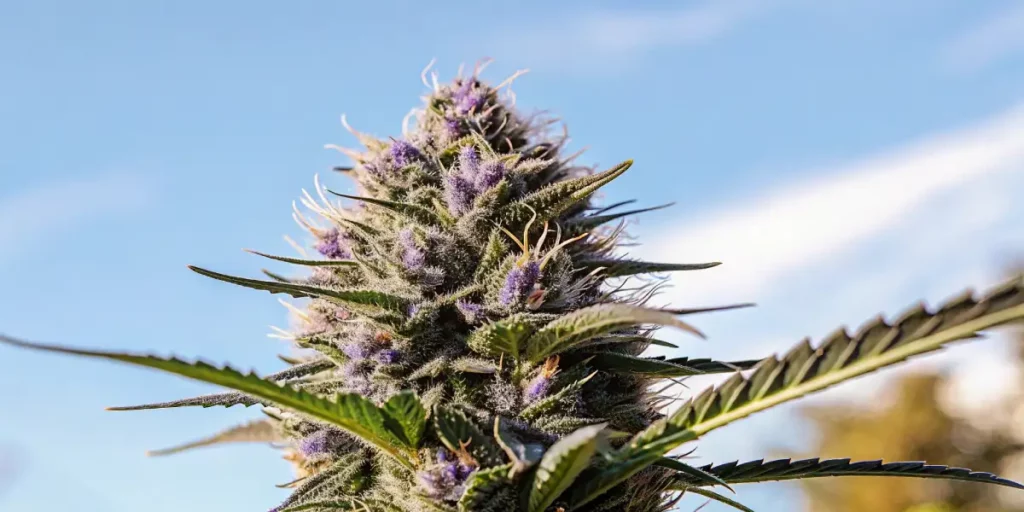
Propagation and Germination of Hindu Kush Regular
Successful propagation of Hindu Kush Regular begins with the germination process, which is key to a healthy start. Begin by soaking the seeds in distilled water or placing them in a damp paper towel for 24-48 hours to initiate germination. The seeds should be kept in a dark, warm environment between 70-85°F (21-29°C). This warm and humid environment mimics the natural conditions that seeds need to start sprouting.
Once the seeds develop taproots, transfer them to a well-draining growing medium, like a seedling tray or small pots filled with a light soil mix. Maintain humidity at 60-70% to aid in the early growth stages. Gentle airflow and indirect light are also recommended during the initial days. As the seedlings develop a few sets of true leaves, they can be transplanted to larger pots or directly into their permanent growing medium. Ensuring that the seedlings are not exposed to drastic changes in temperature or moisture will promote a smooth transition and healthy root development.
Proper germination techniques will ensure a high success rate and give Hindu Kush Regular the foundation needed for vigorous growth and an abundant harvest. It is also advisable to use a rooting stimulant during this stage to encourage faster root growth and better nutrient uptake during the subsequent vegetative phase.
Vegetative Phase of Hindu Kush Regular Strain
During the vegetative phase, Hindu Kush Regular Strain requires plenty of light18-20 hours per day is ideal. High-quality LED or HPS lamps are preferred for their ability to provide sufficient light intensity and appropriate spectral distribution. Nutrients during this phase should be high in nitrogen to promote healthy growth of leaves and stems. Nitrogen is crucial for photosynthesis, which is the driving force behind the rapid growth seen in the vegetative stage.
It is essential to monitor watering practices closely. Water the plants when the top inch of the soil feels dry, ensuring proper moisture while avoiding overwatering. Proper training techniques, like low-stress training (LST) or topping, can also be used to shape the plants, improve light penetration, and enhance bud growth. These methods help maximize yields and ensure uniform development. Another effective training method is defoliation, which involves removing excess leaves to allow more light to reach the lower bud sites.
Ensuring a balanced environment with consistent humidity, adequate airflow, and stable temperatures is key during this phase. Providing additional support like fans can help strengthen the stems and prepare them for the flowering phase when the plant’s energy will be redirected towards bud production.
Flowering Phase of Hindu Kush Regular Seeds
The flowering phase is when Hindu Kush Regular Seeds truly shows its potential, with the production of thick, resinous buds. Reduce the light schedule to 12 hours on and 12 hours off to stimulate flowering. This phase typically lasts 8-10 weeks, depending on environmental factors and phenotype characteristics. The buds will start to develop quickly, and the production of resin will increase, giving the plant its characteristic frosty appearance.
During this stage, switch to a nutrient mix higher in phosphorus and potassium to support bud production. The temperature should ideally be lowered to 65-75°F (18-24°C) with humidity levels reduced to around 40-50% to prevent mold growth. Supporting the plant structure during the flowering phase is crucial, as the weight of the buds can easily break unsupported branches. Bamboo stakes or netting are excellent tools for providing additional support and preventing plant stress.
Additionally, it is important to monitor the trichome development closely as harvest time approaches. Trichomes should be mostly cloudy, with some beginning to turn amber for the best balance of THC potency and terpene profiles. Flushing the plants with pure water two weeks before harvest will help remove any residual nutrients, leading to a smoother smoke.
Cannabis Fertilization and Nutrition
Proper nutrition is critical for the growth and yield of Hindu Kush Regular Strain. It is important to use a balanced cannabis-specific fertilizer rich in macro and micronutrients. During the vegetative stage, the focus should be on higher nitrogen content, while the flowering stage requires a shift towards phosphorus and potassium. Micronutrients such as calcium, magnesium, and sulfur are also crucial for preventing deficiencies that can lead to stunted growth or poor bud development.
Consider adding supplements, such as mycorrhizae or microbial inoculants, to improve nutrient absorption and root health. These beneficial microorganisms form a symbiotic relationship with the plant roots, enhancing their ability to absorb water and nutrients. Monitoring nutrient levels, flushing plants during the last weeks of flowering, and avoiding nutrient burn are also essential practices to ensure a high-quality harvest with maximum flavor and potency. Regular pH testing should also be carried out to ensure that nutrient uptake is not being hindered by an unsuitable pH level.
Pest and Disease Control for Cannabis Growing
Although Hindu Kush Regular is naturally resilient, it can still be susceptible to common pests and diseases. Preventative measures, such as maintaining a clean grow area, providing adequate airflow, and using organic pest repellents, are highly recommended. Creating an environment that is inhospitable to pests will reduce the likelihood of infestations significantly.
If an infestation occurs, use low-toxicity pesticides or natural remedies like neem oil. Beneficial insects, such as ladybugs and predatory mites, can also be introduced to keep pests under control naturally. Regularly inspecting the plants for signs of mold, mildew, or pests is crucial to maintaining plant health and ensuring a successful harvest. Early detection of issues can prevent widespread damage and minimize yield loss.
For disease prevention, maintaining proper humidity levels and airflow is critical, particularly during the flowering phase when dense buds are most vulnerable to mold and mildew. Pruning lower branches and ensuring enough space between plants can help reduce the risk of disease spread.
Harvesting and Curing for Cannabis Growing
Harvesting Hindu Kush Regular at the right time ensures maximum potency and quality. Monitor the trichomes harvest when they are mostly cloudy with some turning amber, as this indicates peak cannabinoid levels. Use sterilized tools to trim branches carefully, removing large fan leaves while leaving sugar leaves intact. Sugar leaves contain trichomes and can be used later for extracts or edibles.
After harvesting, dry the branches in a dark, ventilated space with temperatures of 60-70°F (15-21°C) and humidity levels of 50-60%. The drying process usually takes around 7-14 days, depending on the density of the buds and environmental conditions. Proper drying prevents mold and helps maintain the terpenes, which are responsible for the strain’s flavor and aroma.
Afterward, curing the buds in airtight jars for several weeks further enhances the flavor and potency, ensuring a premium-quality final product. During the curing process, open the jars once a day for the first week to release excess moisture, then gradually reduce the frequency of burping. This slow curing process allows for optimal terpene development and smoothness of the final product.
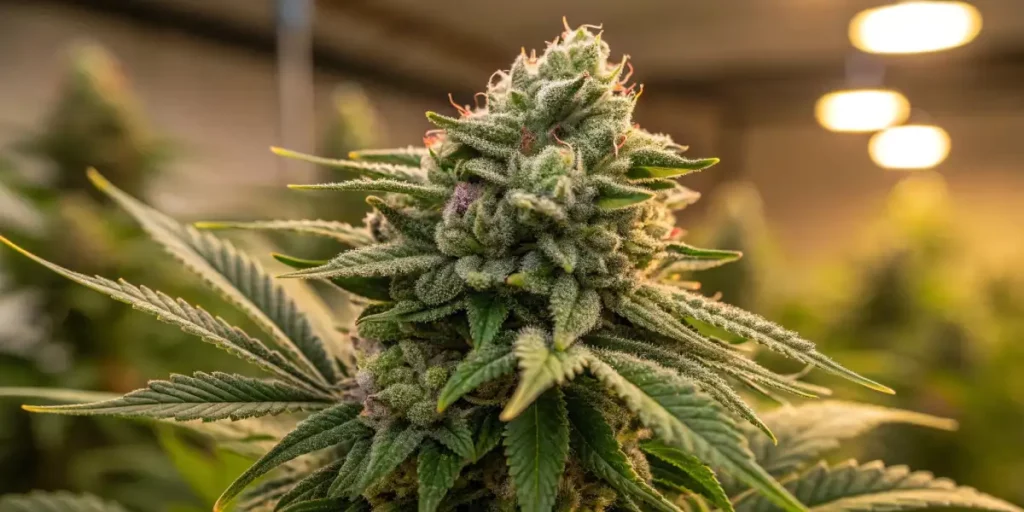
Is Hindu Kush Regular Strain Indica or Sativa?
Hindu Kush Regular Strain is a pure Indica strain known for its calming effects. With its lineage from the Hindu Kush mountain range, it delivers a deeply relaxing and soothing experience, characteristic of Indica varieties. This strain is highly suitable for those seeking relief from insomnia, stress, and muscle pain, providing a full-body relaxation that promotes calm and restfulness. The intense body high is complemented by a gentle cerebral effect, making it effective for evening or nighttime use, particularly when one needs to unwind.
Advantages of Growing Hindu Kush Regular Strain
- Easy to grow with natural resilience to environmental conditions, making it a good choice for both beginners and experienced growers.
- Produces dense, resinous buds rich in cannabinoids and terpenes, ideal for making extracts and concentrates.
- Strong Indica effects, ideal for relaxation, sleep aid, and medical use.
- Adaptable for both indoor and outdoor growing environments, with good resistance to challenging climates.
Disadvantages of Growing Hindu Kush Regular Seeds
- Medium THC levels may not satisfy those looking for very high potency compared to other more modern hybrids.
- Requires support during flowering due to dense bud formation, which can lead to broken branches if left unsupported.
- Susceptible to mold if humidity is not adequately controlled during flowering, particularly in dense buds.
Why Buy Hindu Kush Regular Seeds
Hindu Kush Regular Strain is perfect for cultivators seeking an original, pure Indica experience. Its classic flavor profile, coupled with its ability to provide relaxation and medicinal benefits, makes it a great choice for many. This strain’s adaptability for both indoor and outdoor growth further enhances its appeal to growers of all experience levels, especially those who appreciate naturally resilient genetics. Moreover, the consistency in growing results and the quality of buds makes Hindu Kush Regular a trusted favorite among seasoned growers who value reliability.
Problems in Cultivating Hindu Kush Regular Strain
Some of the common challenges associated with growing Hindu Kush Regular Strain include managing nutrient deficiencies, especially during the vegetative phase, and controlling mold during flowering. High odor levels also require a robust odor control system when grown indoors, such as carbon filters. Additionally, some growers might face issues with pests if preventive measures are not adequately implemented. However, these challenges can be easily mitigated with close monitoring and appropriate growing practices, such as ensuring proper pH levels, maintaining stable humidity, and conducting routine inspections for pests and mold.
Similar Strains
- Afghan Kush regular: Another classic pure Indica strain with similar relaxing effects and a rich earthy aroma. Afghan Kush is known for its high resin production and resilience to adverse environmental conditions.
- Master Kush regular: A potent Indica strain known for its high resin production and calming properties. Master Kush offers a similar earthy and citrus flavor, ideal for relaxation and unwinding after a long day.
- Critical Kush: A strain that combines heavy Indica genetics with a balanced effect, perfect for relaxation and stress relief. It offers higher THC levels, making it a good alternative for those seeking a more intense experience.
Tips for Professionals
- Employ advanced training methods like super cropping to increase yields and maximize light exposure to lower bud sites.
- Maintain consistent airflow and monitor environmental conditions to avoid mold issues during flowering, especially with dense buds.
- Use CO2 enrichment in your grow area to boost growth rates and overall plant health. This can lead to a significant increase in yields, particularly during the flowering stage.
- Utilize high-quality LED lights to enhance bud quality while keeping energy costs low. Full-spectrum LEDs are particularly effective in promoting healthy growth and resin production.
- Experiment with different growing mediums, such as organic soil versus hydroponics, to determine which produces the best yields and flavors for Hindu Kush Regular Strain.
FAQs
What is the best climate for growing Hindu Kush Regular Strain?
Hindu Kush Regular Strain thrives in a temperate climate with daytime temperatures between 70-80°F (21-27°C). It performs well in both indoor and outdoor settings, provided that temperature and humidity are adequately managed.
How long does Hindu Kush Regular Strain take to flower?
The flowering period for Hindu Kush Regular Strain typically lasts between 8 to 10 weeks, depending on the growing conditions and phenotype. Outdoor growers can expect to harvest in late September to early October.
Is Hindu Kush Regular Strain suitable for beginners?
While Hindu Kush is a resilient strain, it is recommended for growers with some experience due to the need for careful environmental control during flowering. Its forgiving nature, however, makes it a good stepping stone for beginners willing to learn.
What are the medical benefits of Hindu Kush Regular Strain?
Hindu Kush Regular Strain is effective for alleviating symptoms of depression, insomnia, and muscle spasms due to its relaxing Indica properties. It also provides relief from chronic pain, making it popular among medical users seeking natural alternatives.
What kind of yields can I expect from Hindu Kush Regular Strain?
With optimal growing conditions, Hindu Kush Regular Strain provides moderate to high yields, particularly when grown in nutrient-rich soil or a well-maintained hydroponic system. Indoor yields typically range from 400-450 grams per square meter, while outdoor plants can yield even more, especially in favorable climates.


